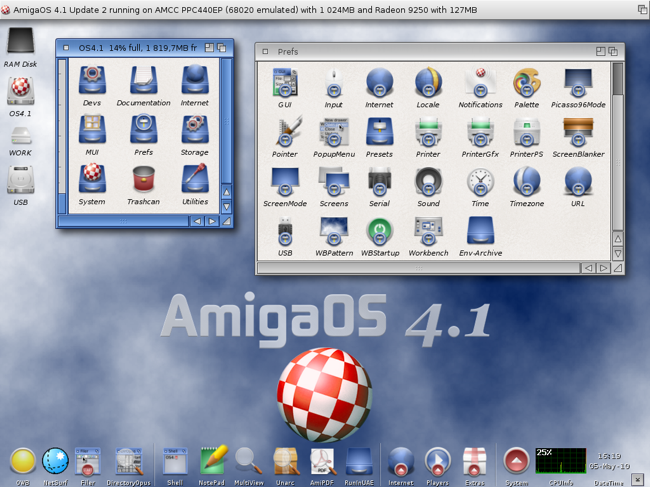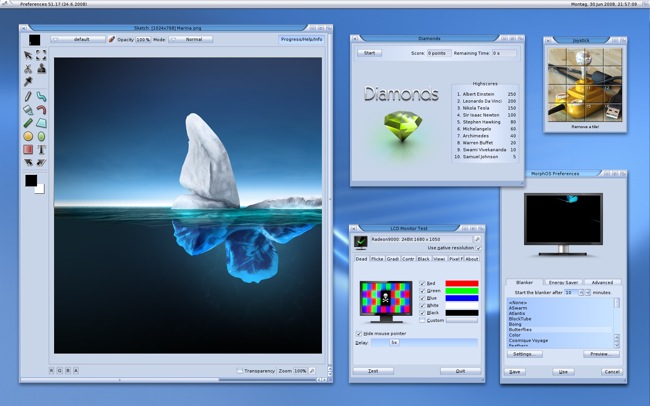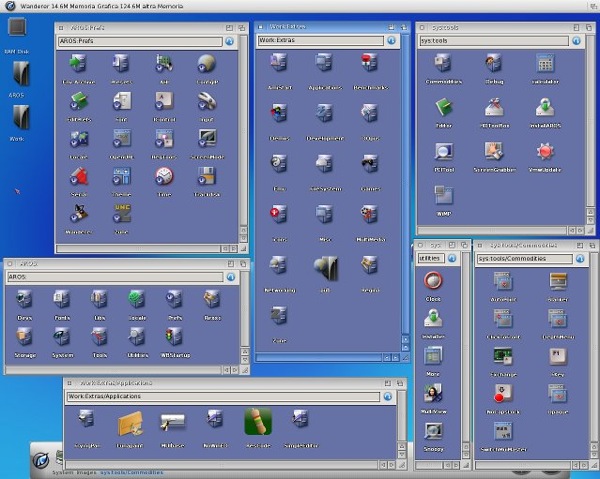Although the original Commodore Amiga line of computers perished with Commodore itself when the company went bankrupt in 1994, enthusiasts are still keeping the platform alive today.
If you thought Mac and Linux users are cultish, Amiga users are obsessed with their favorite platform, continuing to use their old machines and run modern versions of the classic Amiga OS on new hardware as well.
The original Amiga was released in 1985 and blew the minds of everyone who saw it, yet Commodore’s management legendarily botched its marketing in the U.S. The platform did became popular overseas, since it was significantly cheaper than IBM PCs and Macs of the time. The Amiga had dedicated sound and video hardware, a concept that is common today but was very new at the time.
It was also one of the first computers to allow for multitasking. At the time, the only other way to be able to run more than one program at a time was to use expensive workstation computers, minicomputers, or mainframes.
Gamers flocked to the platform, as well as artists and video professionals (especially after the Video Toaster was released). In the late ’80s and early ’90s, if you were a creative person, the Amiga was the computer to have, a niche the Mac currently occupies. Its fans included people such as Todd Rundgren and Dick Van Dyke.
For a platform whose originator imploded in the mid-’90s, the Amiga still has a strong following that continues today. If you’re a former user who wants to relive your glory days or are just curious, here are a few options if you want to go Amiga:
AmigaOS
The classic AmigaOS is still being developed by Hyperion Entertainment, who currently hold the rights to the system. It currently runs on PowerPC systems like the AmigaOne 500 available from ACube Systems (or you can also buy the Sam440 or Sam460 boards and build your own system).
MorphOS
MorphOS is another variant of the classic AmigaOS that offers some enhanced graphical features. It’s very slick and performs much better performance on the same hardware than other systems. It runs late-model PowerPC-based Macs, so if you’ve got one of them (or buy one off of eBay), it’s a great way to get some use out of the old machines with something that’s supported, since Apple’s newest versions of OS X don’t run on PowerPC.
AROS
AROS is an attempt to create a completely free and open source API-compatible clone of the AmigaOS that runs on x86 machines, which most people around the world use. If you want a taste of the system, you can download Icaros Desktop Live lets you run it from a CD or USB stick. It’s still in development, though it’s an interesting system to watch.
Of course, you can also buy an old Amiga from eBay. But if you do, be aware that some models use a battery to keep the system clock in sync. These batteries often leak, damaging the hardware.
We covered AROS in 5 Little-Known Open Source Operating Systems. Fans of Commodore and ’80s culture in general will want to check out a modern version of Commodore’s other iconic computer, the C64.













